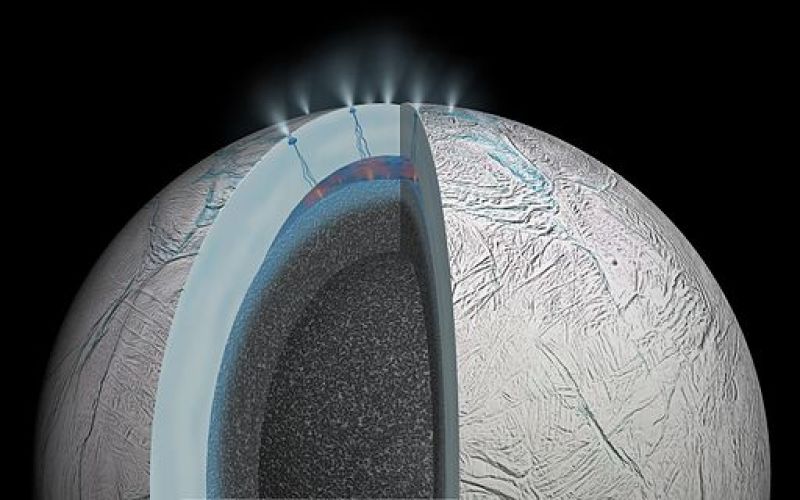
Scientists from NASA have just made an important discovery regarding the interior of Enceladus, the icy moon orbiting Saturn.
According to experts, images of the planet strongly indicate that an ocean or massive water reservoir exists between its frozen surface and core, ABC has learned.
This is not the first time that evidence of water from the moon was discovered. With the help of Cassini, the spacecraft launched by NASA in 1997, scientists were able to confirm the existence of liquid material, steam and ice on Enceladus' south pole.
Cassini reached Saturn in 2004. Over the last few years, it has been studying the planet's characteristics and its moons.
The latest discovery about Enceladus was made while scientists were studying the wobble in its orbit. According to them, if the moon is fully frozen from its interior to its outer surface, the wobble in its motion would be smaller.
However, since its motion is more observable, this suggests that Enceladus is not frozen completely. This is according to the data the scientists gathered after inputting the measurement of the moon's wobble in various computer models to determine its internal composition.
"If the surface and core were rigidly connected, the core would provide so much dead weight the wobble would be far smaller than we observe it to be," Matthew Tiscareno, one of the scientists working on the Cassini spacecraft explained according to ABC.
"This proves that there must be a global layer of liquid separating the surface from the core," he added.
The scientists, however, are still not sure how the ocean remained in its liquid form despite the moon's icy characteristic.
But, it could be related to another discovery made by a group of researchers from the University of Colorado's Laboratory for Atmospheric and Space Physics earlier in March of this year. According to the researchers, through the images from Cassini, they were able to discover silicon-rich grains of rock on the moon's surface. They believe these were formed due to the presence of hydrothermal vents on Enceladus, The Verge rported.
Like the sand grains found on Earth, those on the moon were also formed through a hydrothermal process. This suggests that a force heats up the mineral-rich water on the moon's subsurface which leads to the formataion of the grains. This is considered as an vital discovery because the hydrothermal processes of Earth are regarded as one of the factors involved in the development of living organisms.



















